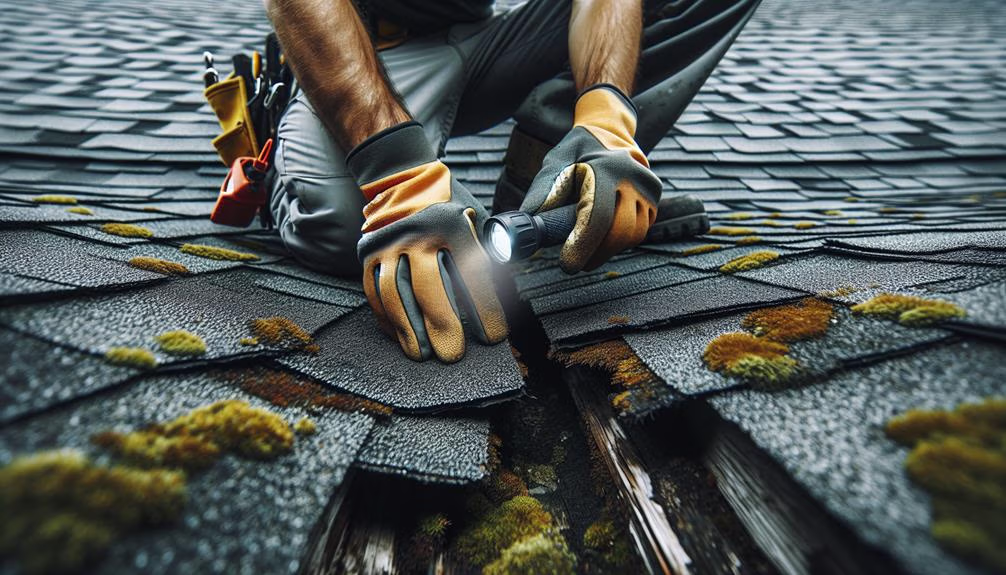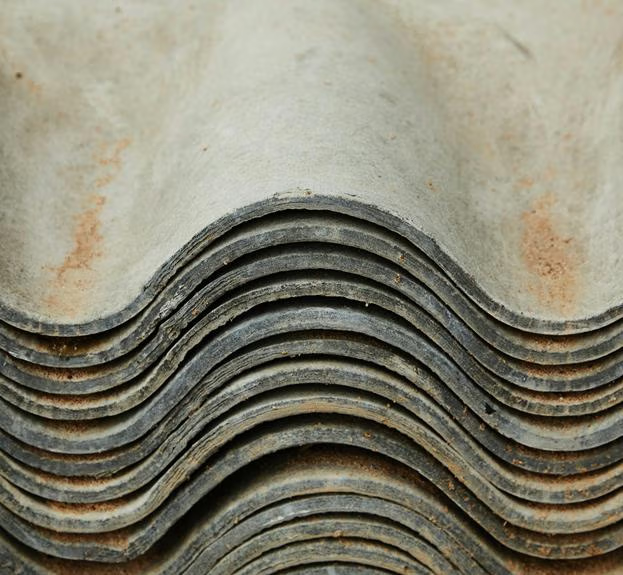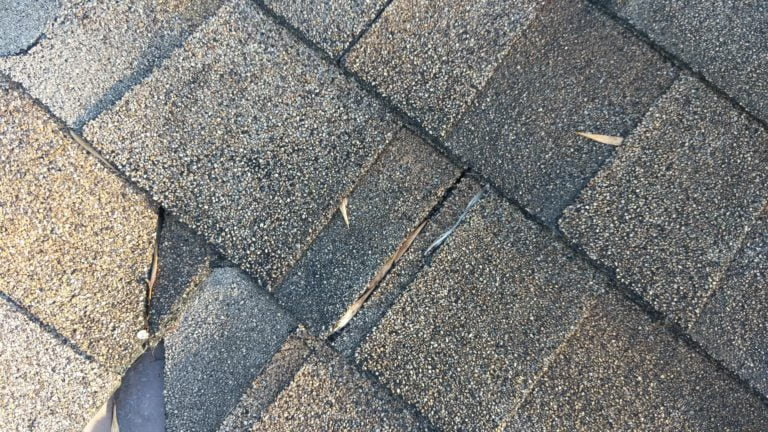Installing a new roof is one of the most important upgrades you can make to protect your home from the elements. Whether you’re a hands-on DIY homeowner or simply want to understand the process before hiring a contractor, this step-by-step guide walks you through the entire roof replacement process—from preparing the work area to laying shingles and installing flashing.
As a roofing professional with years of experience on residential projects, I’ve broken this down into simple, actionable steps that mirror what top contractors do every day. This guide will cover everything from safety prep and underlayment to drip edge installation, proper shingle layout, and final inspection. With the right tools, planning, and attention to detail, homeowners can better understand or even tackle their own roof installation with confidence.
🛠 Step-by-Step Guide: How to Install a New Roof
1. Prep the Area
Before you start, clear the driveway and yard so nothing gets damaged. Set up your ladders, put on your safety gear, and make sure you have all the tools you’ll need.
2. Tear Off the Old Roofing
Use a roofing shovel or pitchfork to remove all the old shingles, nails, and flashing. Be careful not to damage the roof decking underneath.
3. Check and Repair the Roof Deck
Inspect the decking for any rot or soft spots. Replace any damaged sections so you’re starting with a solid, safe base.
4. Install the Drip Edge and Underlayment
Start at the eaves and install the metal drip edge first. Then roll out the underlayment (felt or synthetic), overlapping each row as you move upward. Secure it with cap nails or staples.
5. Lay Down the Shingles (or Panels)
Begin at the bottom and work your way up. Stagger each row so seams don’t line up. Follow the nailing pattern on the packaging and take your time to align everything straight.
6. Add Flashing and Vents
Install flashing around chimneys, valleys, and skylights to keep water out. Seal roof vents properly and use roofing cement where needed.
7. Inspect and Clean Up
Walk the roof and check your work. Look for missed nails, loose shingles, or gaps in flashing. Then clean up the yard and safely dispose of all debris.
💡 Pro Tips for DIY Roofers
Don’t rush—roofing is time- and labor-intensive.
Only work in good weather—no rain or strong winds.
Always have someone nearby when using ladders.
Follow local codes and get a permit if needed.
Use ice and water shield in cold-climate areas.
Assess Your Current Roof

Before undertaking the installation of a new roof, it is essential to thoroughly assess the condition of your current roofing system. This initial step provides a clear understanding of any underlying issues that may need addressing and helps in planning a comprehensive roofing project.
Start by conducting a visual roof inspection from both the ground and, if safely possible, atop the roof. Look for common signs of wear such as missing, curled, or cracked shingles, as well as any areas where the roof may be sagging. Pay close attention to the flashing around chimneys, vents, and other roof penetrations, as these are common sites for leaks.
Additionally, inspect the attic for signs of water damage, mold, or insulation issues. A damp or musty odor can be indicative of moisture intrusion which, if left unchecked, could compromise the structural integrity of your home.
Evaluate the age of your existing roof; typical asphalt shingles last between 20-30 years, while other materials may have different lifespans. Documenting these findings will be instrumental in discussions with roofing professionals, ensuring all potential problems are addressed before the new installation begins. This detailed assessment is crucial for a successful and lasting roofing project.
Choose Roofing Materials
Selecting the appropriate roofing materials is a pivotal step that influences the durability, aesthetics, and overall performance of your new roof. This decision extends beyond simply choosing a color or style; it encompasses considerations of climate, budget, and structural requirements. Understanding the variety of available options can help you make an informed decision that best suits your home’s needs.
When choosing roofing materials, consider the following:
- Asphalt Shingles: Widely popular for their affordability and ease of installation. They come in various colors and styles, accommodating diverse architectural designs.
- Metal Roofing: Known for its longevity and resistance to extreme weather conditions. Metal roofs can last up to 50 years or more with proper maintenance.
- Clay and Concrete Tiles: These offer excellent durability and are fire-resistant, making them ideal for hot climates. However, they are heavier and may require reinforced roof framing.
- Wood Shingles and Shakes: Provide a natural, rustic appearance. They typically require more maintenance and are less fire-resistant unless treated.
- Slate: Renowned for its natural beauty and longevity. Slate is highly durable but also one of the most expensive and heaviest roofing materials.
Each option has its pros and cons and understanding these can lead to a more enduring and visually appealing roof.
Gather Necessary Tools

Equipping yourself with the right tools is essential to ensure a smooth and efficient roof installation process. The first step is to compile all necessary safety gear, which includes a sturdy pair of work gloves, safety goggles, and a hard hat. Additionally, a safety harness is crucial for preventing falls while working at heights.
Next, ensure you have the basic tools. A roofing hammer or pneumatic nail gun will be indispensable for securing shingles. Additionally, a utility knife will be vital for cutting underlayment and shingles to the correct size. A chalk line can help maintain straight lines, while a tape measure ensures precise measurements.
For removing old roofing nails and materials, a roofing shovel or tear-off shovel is highly effective. A pry bar can also assist in this endeavor. Furthermore, keep a caulking gun ready for sealing joints and edges.
Lastly, consider advanced tools like a circular saw for cutting through plywood and a ladder hoist for lifting materials to the roof. Having these tools on hand before you begin will save time and effort, making the entire roofing process more streamlined and less stressful.
Remove Old Roofing
With your tools and safety gear prepared, the next step involves carefully removing the old roofing materials to create a clean surface for the new installation. This phase is crucial as it lays the groundwork for a seamless and effective new roof. Start by removing the shingles, beginning at the peak and working your way downwards. Use a roofing shovel or a pry bar to lift the shingles and underlying nails.
To ensure a thorough and efficient removal process, pay attention to the following steps:
- Clear the Area: Remove any debris or loose materials from the roof to prevent accidents and facilitate easier removal of old roofing.
- Protect Landscaping: Use tarps to cover plants and other landscaping features around the house to catch falling debris and nails.
- Inspect for Damage: As you remove the old materials, inspect the decking for signs of rot or damage; replace any compromised sections.
- Dispose of Old Materials: Use a dumpster or designated disposal area to manage waste effectively.
- Maintain Safety: Always wear appropriate safety gear, including gloves, goggles, and non-slip shoes, to protect yourself during the removal process.
Install Underlayment

To ensure a durable and weather-resistant roof, selecting the appropriate underlayment material is crucial. Proper installation techniques must be adhered to in order to maximize the underlayment’s effectiveness in providing a robust barrier against moisture. Additionally, attention to waterproofing and sealing will further enhance the protection of your roof structure from potential water damage.
Underlayment Material Options
Selecting the right underlayment is essential for protecting your roof from moisture and extending its lifespan. Installed directly over the decking and beneath your shingles, underlayment adds a critical layer of defense against rain, snow, and wind-driven water. Here’s a breakdown of the most common types and their benefits:
Asphalt-Saturated Felt:
A traditional and affordable option, often available in 15 lb and 30 lb weights. It provides basic moisture protection but is more prone to tearing and water saturation compared to modern materials.Synthetic Underlayment:
Lightweight, strong, and highly water-resistant. Made from polypropylene or polyethylene, this type resists tearing and holds up well under harsh weather—making it a favorite for long-term durability.Rubberized Asphalt:
A high-performance option with self-adhesive properties that seal tightly to the decking. It’s excellent for cold climates, ice dam prevention, and areas exposed to frequent rainfall.Peel-and-Stick Underlayment:
Similar to rubberized asphalt, this self-adhering underlayment is ideal for leak-prone areas like valleys, edges, and eaves. It creates a tight seal that helps prevent water infiltration even under extreme conditions.Modified Bitumen (Self-Adhering):
Combines asphalt with polymer-modified compounds to deliver enhanced flexibility, waterproofing, and durability. A reliable all-weather solution that performs well in both hot and cold climates.Roof Underlayment Selection Checklist
Use this checklist to evaluate which underlayment is best for your roofing project:
✅ Task Consideration Budget available- Felt is budget-friendly; synthetics and rubberized asphalt are more expensive but offer better performance Climate conditions-
Cold, wet, or snowy climates may benefit from rubberized or peel-and-stick underlayment’s Roof pitch/slope-
Steeper roofs may allow more water runoff; flatter roofs require more waterproofing (rubberized or synthetic recommended) Local code compliance- Verify with your municipality which underlayment’s are approved or required in your area Tear resistance needed-
If the roof will be exposed for a while before shingles are installed, choose a synthetic option for durability Moisture protection priority- For high moisture-prone areas (valleys, eaves), consider peel-and-stick or rubberized asphalt underlayment Installation method- Decide between traditional fastened underlayment or self-adhering (faster, but may cost more) Fire rating and UV resistance- Especially important if the underlayment will be exposed for a period before final roofing is completed Compatibility with roofing material- Make sure the underlayment is suitable for asphalt shingles, metal roofing, tile, etc.
Proper Installation Techniques
Ensuring proper installation of underlayment is fundamental to the success of your roofing project, as it enhances the roof’s ability to protect your home from moisture and environmental elements.
Begin by preparing the roof deck, ensuring it is clean, dry, and free of any protruding nails or debris. This creates a smooth base for the underlayment.
Next, roll out the underlayment material horizontally across the roof, starting from the eaves and working upwards. Overlap each course by at least 4 inches to ensure comprehensive coverage and prevent water intrusion.
Secure the underlayment using roofing nails or staples placed approximately 12 inches apart along the edges and in the middle of each roll to prevent it from shifting.
Pay special attention to valleys, ridges, and roof penetrations such as vents or chimneys. Cut the underlayment to fit these areas precisely, and ensure overlaps are tight and secured. For valleys, consider doubling the layer for added protection against water flow concentration.
Waterproofing and Sealing
With the underlayment properly installed, the next step is to focus on waterproofing and sealing to ensure your roof can withstand the harshest weather conditions. This crucial phase serves as the final defensive layer, averting leaks and damage that can compromise the integrity of your roof. Here, attention to detail is paramount.
First, apply a high-quality waterproofing membrane over the underlayment. This membrane acts as an additional barrier against moisture infiltration.
Next, seal all seams and edges meticulously to prevent water seepage. This involves using specialized roofing tape and sealants designed for maximum adhesion and durability.
Ensure that all flashing around roof penetrations like chimneys and vents is installed correctly and sealed properly to prevent leaks.
To provide a structured approach, consider the following steps:
- Apply self-adhesive membrane around critical areas such as eaves and valleys.
- Overlap membrane layers by at least 6 inches to ensure comprehensive coverage.
- Use roofing nails or staples to secure the membrane, ensuring they are corrosion-resistant.
- Inspect for gaps or bubbles in the membrane and rectify immediately.
- Seal and reinforce flashing with additional waterproofing tape and sealant.
With careful execution, these steps will fortify your roof against the elements, ensuring long-term durability and peace of mind.
Lay Down New Shingles
Before you begin laying down new shingles, it is crucial to ensure that the surface is clean, dry, and free of any debris to guarantee proper adhesion and a long-lasting roof. Start by installing a drip edge along the eaves to direct water away from the fascia and prevent water infiltration. Next, lay down a starter strip at the edge of the roof. This creates a solid foundation and helps prevent wind uplift.
Align the bottom edge of the first row of shingles with the drip edge, ensuring there is a slight overhang. Secure each shingle with nails, placing them about one inch above the cut-out and ensuring they penetrate the decking. Stagger the seams by starting the second row with a half shingle, which enhances the roof’s structural integrity and aesthetic appeal.
Continue this process, working your way up to the ridge. Ensure that each row overlaps the previous one by about six inches, as specified by the manufacturer. This overlapping technique is critical for water shedding and overall roof durability. As you approach the peak, cut shingles to fit neatly and prepare for the final capping process.
Secure Flashing and Vents

Securing flashing and vents is a critical step in the roofing process to prevent water infiltration and ensure the longevity of the roof system. Flashing, typically made of metal, is installed around roof penetrations such as chimneys, skylights, and vents to direct water away from these vulnerable areas. Proper installation is vital to avoid leaks and subsequent damage.
When working on flashing and vents, attention to detail is paramount. Here are some essential steps to follow:
- Select the Right Material: Use high-quality, corrosion-resistant materials like aluminum or galvanized steel for durability.
- Install Underlayment: Ensure the underlayment extends under the flashing to create a continuous water barrier.
- Proper Overlapping: Flashing pieces should overlap to direct water flow away from the roof, not under the shingles.
- Securely Fasten: Use roofing nails or screws to firmly attach flashing, avoiding gaps where water could penetrate.
- Seal Joints: Apply a high-grade sealant to all joints and seams for added protection.
Inspect and Clean Up
How can you ensure the success and safety of your newly installed roof without a thorough inspection and meticulous cleanup? Once the roofing material is in place, inspecting your work is crucial. Begin by checking for any loose or improperly secured shingles. Ensure that flashing and vent installations are watertight.
Next, look for any nails or debris that could potentially damage the roof or pose safety hazards. Utilize a magnetic sweeper to efficiently pick up stray nails. Pay special attention to valleys, ridges, and areas surrounding vents and chimneys, as these are common spots where debris tends to accumulate.
Below is a concise checklist to guide you through the inspection and cleanup process:
| Task | Description |
|---|---|
| Check Shingle Security | Ensure all shingles are firmly in place |
| Inspect Flashing | Verify watertight integrity |
| Remove Debris | Use magnetic sweeper for nails |
| Final Walkthrough | Conduct a comprehensive visual check |
After the inspection, a thorough cleanup is essential. Collect all leftover materials and dispose of them properly. Clean up the surrounding yard area to remove any hazardous objects. This not only enhances safety but also leaves a professional finish. Remember, a meticulous inspection and cleanup can significantly extend the life of your roof and provide peace of mind.
Frequently Asked Questions
How Long Does the Roofing Installation Process Typically Take?
The duration of the roofing installation process generally varies based on several factors, including the size and complexity of the roof, weather conditions, and the efficiency of the roofing team.
Typically, a standard residential roof can be completed within one to three days. However, more intricate or larger projects may extend to a week or more. Ensuring preparedness and clear communication with your roofing contractor can facilitate a smooth and timely installation.
What Are the Common Signs That a Roof Needs Replacement?
Common signs that a roof needs replacement include curling or missing shingles, leaks, and frequent shingle granules in gutters. Additionally, dark streaks or moss growth signal moisture retention, while sagging indicates structural damage.
Age is also a key factor; roofs older than 20-25 years typically need replacement. Regular inspections can identify these issues early, preventing more extensive and costly damage. Professional consultation is advisable for accurate assessment.
How Much Does a New Roof Installation Usually Cost?
The cost of a new roof installation typically varies based on several factors, including the size of the roof, the type of materials used, and regional labor costs. On average, homeowners can expect to pay between $5,000 to $10,000 for a standard asphalt shingle roof.
However, premium materials such as metal or tile can significantly increase the price, potentially reaching $25,000 or more. Always obtain multiple quotes for accurate estimates.
Can I Install a New Roof Over an Existing One?
Yes, you can install a new roof over an existing one, a process known as re-roofing. However, it is essential to consider the current roof’s condition, local building codes, and the total weight of the new roofing materials.
Re-roofing can be cost-effective and less labor-intensive, but it may not be suitable for all situations, especially if the existing roof has significant damage or structural issues. Consulting a professional is advisable.
What Are the Benefits of Hiring a Professional Roofer?
According to industry reports, approximately 90% of roofing issues are attributed to improper installation. Hiring a professional roofer ensures adherence to local building codes, use of high-quality materials, and comprehensive warranties.
Experienced roofers bring specialized knowledge, reducing the risk of future problems. Their expertise in identifying underlying issues and providing precise solutions not only enhances the longevity of your roof but also ensures safety and structural integrity.
Conclusion
The installation of a new roof, juxtaposing meticulous planning with hands-on labor, requires a systematic approach. Assessing the current roof establishes the foundation for the project, while selecting appropriate materials ensures durability.
Gathering tools and removing old roofing prepare the surface. Installing underlayment and laying shingles form the protective layers, with flashing and vents adding essential finishing touches. A thorough inspection and cleanup conclude the process, blending precision with practicality for a robust and aesthetically pleasing result.






